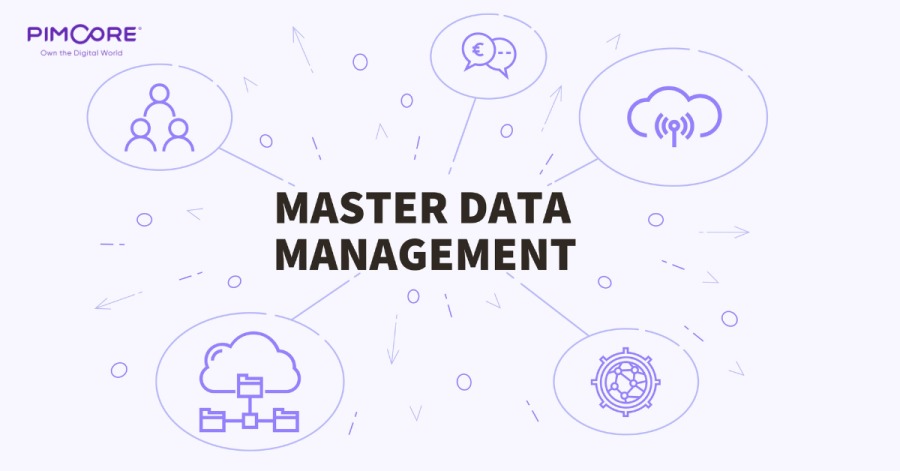5 Capabilities That Can Lead You to a Path of Perfection in Your PIM Strategy

When marketers at a midsize apparel brand incorporated necessary product information (size and material) within its ecommerce portal but failed to integrate informational hooks such as rich product visuals and product reviews, their initial excitement of expanding to new geographies fizzed out.
Similar to this, many brands do prepare for challenges like localization and currency conversion yet struggle to kickstart their expansion. They also try to implement a basic information management solution to handle the explosion of product information. However, their shortsightedness made them plunge headlong without having a strategy for product information management (PIM) in place.
And they are not the only ones. This is the story of many enterprises that lack a strategy to manage product information. A well-thought PIM strategy, coupled with an adaptable PIM platform, is critical to help enterprises streamline product information management as they grow in size and scope.
From an Enabler to a Force Multiplier
Traditionally, a PIM platform helped organizations create product catalogs, enabling sales and marketing teams to seamlessly distribute information and eliminate manual efforts. An advanced PIM can also ease product enrichment, boost team productivity, improve conversion rates, and more. In fact, today’s PIM platforms can streamline data and automate up to 70%-80% of manual tasks.
This is particularly important in an environment where ever-evolving customer demands and market trends are forcing brands to hyper personalize their interactions with customers. Brands are integrating chatbots to keep up 24/7 support, employing augmented reality (AR) to provide a rich visual experience of products and much more. Besides driving personalization, this kind of customer-centrism improves sales and conversion. A PIM platform can support the integration of emerging technologies such as AR and chatbots on an ecommerce website, helping brands to meet their customer satisfaction goals.
For instance, besides using compelling product descriptions crafted by the product marketing team, the sales team can suggest edits, subject to approval. Leveraging a PIM platform to support high-end tasks like these becomes imperative when enterprises grow in scope.
5 Performance Enhancers for an Advanced Platform
A PIM platform can change the game the way you traditionally manage your product data and digital assets. Make your PIM platform a super-powerful one that helps you meet your organizational goals with these capabilities:
Employ flexible product modeling: Employing flexible data modeling ensures the success of the PIM platform. While defining the relationship of product data to other kinds of data, it’s important to remember that not just text and its attributes, but unstructured data such as media assets also form a part of product information. A PIM platform helps you organize information the way you want to design the database of your organization, along with using industry-specific classification systems such as eCl@ss, ETIM, or GS1 to classify your product data. For instance, a web-based data modeling engine helps create a new product data model within minutes. Plus, a flexible data model, data editing, and translation interface for multi-lingual data management ensure faster expansion to new markets.
Adopt effective enterprise data management: Be it managing business processes or deriving business intelligence, an efficient enterprise data management system is a prerequisite. Use an agile data model to enable the data editing feature to organize, classify, and aggregate rich product information. Customize the layout so that it can adapt to all data entry masks enabling field-level granularity. This, in turn, appropriates data to the needed editorial workflow. It also enables user right management to customize layout based on the role of each user and particular use cases.
Leverage interoperability: An API-driven approach aids in aggregating data from internal data sources and third-party applications such as CRMs, ERP software, hard drives, suppliers, external partners, and syndicators for enterprise data integration. Brands must adopt this approach to attain hyper connectivity. This further facilitates brands to define, model, map, and execute automatic and manual import and export of third-party data.
Inspect product data quality: A PIM platform offers robust functionalities for defining, validating, and improving data quality. It is recommended to make the most of the in-built reporting engine, with filtering and exporting functionalities, to access the database and generate reports on data quality, etc. Brands must also employ the rich auditing and versioning feature of a PIM to record a new version; save the audit trail to compare different versions and gain insights needed to improve data quality.
Integrate workflow management: A PIM platform includes an advanced workflow engine to define business processes and editorial workflows. Brands can leverage platform features such as states, actions, transitions, and notifications to create even the most complex workflow scenarios effortlessly. This helps them keep an audit trail of each workflow to create and manage information, boost accuracy and productivity while minimizing risks.
Retailers using a PIM platform already have a head start in managing product information. They might be facing a couple of challenges, such as establishing a single source of truth for all product data and generating accurate reports. However, mastering these five capabilities will help organizations mitigate these challenges.
The original copy of my article can be found here.
Artikel von Rahul Singh
Blog ansehen
With Content-as-a-Service (CaaS) model in place, enterprises can ensure that relevant content is del ...

Ever wondered what’s common between an impregnable castle and a sound enterprise Master Data Managem ...

Nearly 2.5 quintillion bytes of data are generated every day. This means, that by the time you read ...
Diese Stellen könnten Sie interessieren
-

Objektmanager (all genders) - Steiermark
Gefunden in: Adzuna AT C2 - vor 3 Tagen
Sodexo Service Solutions Austria GmbH Graz, ÖsterreichDie Sodexo Gruppe ist mit über Mitarbeiter:innen der weltweit führende Anbieter von Services für mehr Lebensqualität. Unser Angebot reicht von Catering, Reinigung über Empfangs-, Sicherheits- und Wartungsdiensten bis hin zu Gutscheinlösungen. Sodexo Österreich ist ein attraktiver ...
-
Produktionsarbeiter (m/w/x) 2 schichtig
Gefunden in: Talent AT 2A C2 - vor 3 Tagen
Randstad Trieben Trieben, ÖsterreichDu bist motiviert und suchst eine neue Herausforderung? · Dann suchen wir Dich Du bekommst die Möglichkeit, Mitglied eines bekannten Unternehmens in Trieben zu werden. · Wir suchen ab sofort · Produktionsmitarbeiter (m/w/d) · Deine Vorteile · Flexible Arbeitszeiten durch Schichta ...
-

IT Supporter
Gefunden in: beBee S2 AT - vor 6 Tagen
Hays Professional Solutions Krefeld, Österreich Ganztags1st-2nd Level-Ansprechpartner im SAP-Helpdesk-Service · Unterstützung bei der Einrichtung, Wartung und kontinuierlichen Verbesserung der entsprechenden ERP-Systeme, insbesondere SAP S/4HANA Cloud · Aufbau und Pflege enger Beziehungen zu den Geschäftsbereichen zur Unterstützung de ...

Kommentare